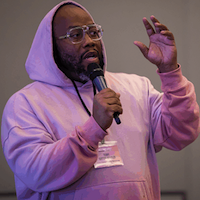When it comes to e-mail campaigns, little things like personalized greetings mean a lot, and big things — like original photography and strong subject lines — mean a whole lot. Data protection firm RSA Security did those things and more in a lead-generation effort that began May 9. The result, says direct marketing manager Mark Reimold, was a 1% higher response rate than the other four subject lines tried in test mailings sent to about 10% of RSA’s database.
Bedford, MA-based RSA was looking for leads for its security evaluation service. The e-mailing offered a free data security white paper to all the IT managers and security officers in RSA’s North American database. Recipients who clicked on the download went to a form that posed a few questions about their company, including two that were straight lead qualifiers asking if they wanted the complimentary security check.
Reimold expected the white paper to resonate with its audience. “It was a strong offer for the security crowd, who appreciate anything that promises to let them do their job better,” he said. The Sarbanes-Oxley Act of 2002 imposed stringent regulations on public companies regarding their IT systems and data security and set a November 2004 deadline. Six months later, many companies still are unsure if their systems meet those government standards, and they’re looking for guidance.
But RSA wanted more muscle behind the campaign than just a strong offer. Working with DM creative agency Passaic Parc, Reimold came up with a design that he says has produced a notably stronger response than any of RSA’s previous e-mailings.
For one thing, it uses strong graphic elements at the top of the e-mail that recipients can click on: a newspaper headline, “Man ‘Drowns’ in Regulations,” with an oversize graphic of a cubicle employee buried in paper. Below that photo, the greeting uses the recipient’s name and tells him to “click to download this important white paper right now.” Finally, an image of the white paper to the left of the e-mail copy offers another clickable button, this one reading “Free.”
“That’s three places users can click to act on our offer — all of them above the fold, so they can be seen in an Outlook preview pane,” says Reimold. “Over half of the clicks we received came on these top-of-page links.”
The other key to the strong response was RSA’s willingness to test different subject lines. That’s not a common attitude in the world of business-to-business e-mail, says Passaic Parc president Robert Rosenthal. “Most b-to-c companies see themselves as marketers first and manufacturers second. But b-to-b companies usually behave like engineering firms, for example, that have to do some marketing.” That means they often tend to see subject-line testing as a cost, not a benefit.
“But RSA has marketers like [Reimold] whose job is to work solely on DM,” Rosenthal adds. “They’re real students of the sport. They came up with good lines to test, then worked with us to pick the strongest.”
What was that line? Reimold won’t say, because he intends to use it again. But he notes that it was specific to the security evaluation offer and that it did not use the recipient’s name or the word “free.”
Results from the e-mailing are “far surpassing our expectations,” he says. “We’ve seen about 1,000 responses so far, a third of which qualify for a follow-up call from our reps.” About 25% of those responders requested a call from RSA and an evaluation. Not all of them will get that call, but they do get flagged as the hottest leads and entered into the company’s contact management system.
With its e-mail copy a proven success, RSA is now looking to leverage the same creative in other channels, notably print.
“One of the magazines read by our security audiences is planning a big data protection issue,” Reimold says. “That might be a good opportunity for us. But this e-mail campaign was definitely the main event, and I’m not surprised it has gone well.”



